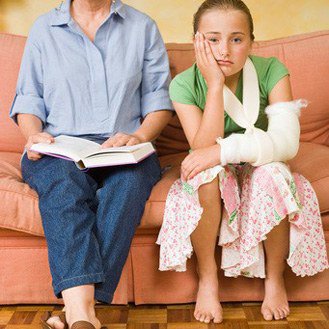5% of women at 50 have osteoporosis, 25% at 60, 50% at 80. It's time to get interested in the question, right? Especially since there are things to know before settling this decrease in bone density.
• Calcium for the bones .
Yes, but especially before puberty . " It is between 8 and 10 years that we must act , confirms Professor Christian Roux, rheumatologist at the hospital Cochin (Paris). Osteoporosis is genetically programmed at 80% . The remaining 20% are malleable before the appearance of female hormones. So, to build the bone capital of our daughters and granddaughters, a good physical activity program is the most effective , with a little calcium (via dairy products or mineral water). ).
• Beware of sodas.
Their phosphates can decrease the absorption of nutrients such as calcium.
• It is the first fracture that must be alerted.
Whatever the age, a fracture during a fall (except skiing, though ...) should be followed by bone densitometry . 8 out of 10 women do not benefit. However, by detecting earlier those whose bones are fragile, we would reduce the risk of second fracture by half . In any case, it is the conviction of the GRIO (Research and Information Group on Osteoporosis) that states: "One does not break one's bones by chance! "
• Osteoporosis is more than an uncomfortable disease
An Australian study showed that fractures of the hip or femur after age 60 increased the risk of death by 25% within five years . Involved: the complications of these fractures.
• Women at higher risk?
Family history is obviously a major risk factor. But not only. For example , women with benign positional vertigo are more likely to suffer from osteoporosis than others , a team from Korea has observed: 25% of "vertigo" women have fragile bones compared to 9% those who have no vertigo ... Intriguing, right?


